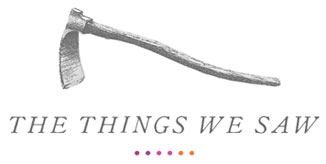3-D printers?
Posted on 14 August 2013
I believe it’s rare for tradespeople to think of themselves explicitly as business owners, and I’m not an exception. We see ourselves as makers of things, and we grudgingly accept the business side as the necessity that allows us to keep making. For example, in the past when people asked me about my business model, I used to fumble for a coherent answer.
I’ve gradually come to realize that I do have a business model, though it’s been implicit for much of my company’s existence: We can succeed if we provide products and services that can’t be replicated in a factory. We’re based in Boston, where wages and expenses are very high, and we rarely make the same thing twice. This is not a classic recipe for efficient production; a manufacturer with high volume and low overhead should beat us every time. But we gravitate, by predisposition and necessity, toward the local and particular. Replicating one-off architectural details and building cabinets for funny-shaped spaces are precisely the tasks that flip the playing field, and our location and production scale become assets.
We just finished making a batch of brackets, just the sort of project that I imagine would be perfect for us. The client brought us weathered examples of two different brackets from a house he’s restoring and asked us to make a five of one and ten of the other.
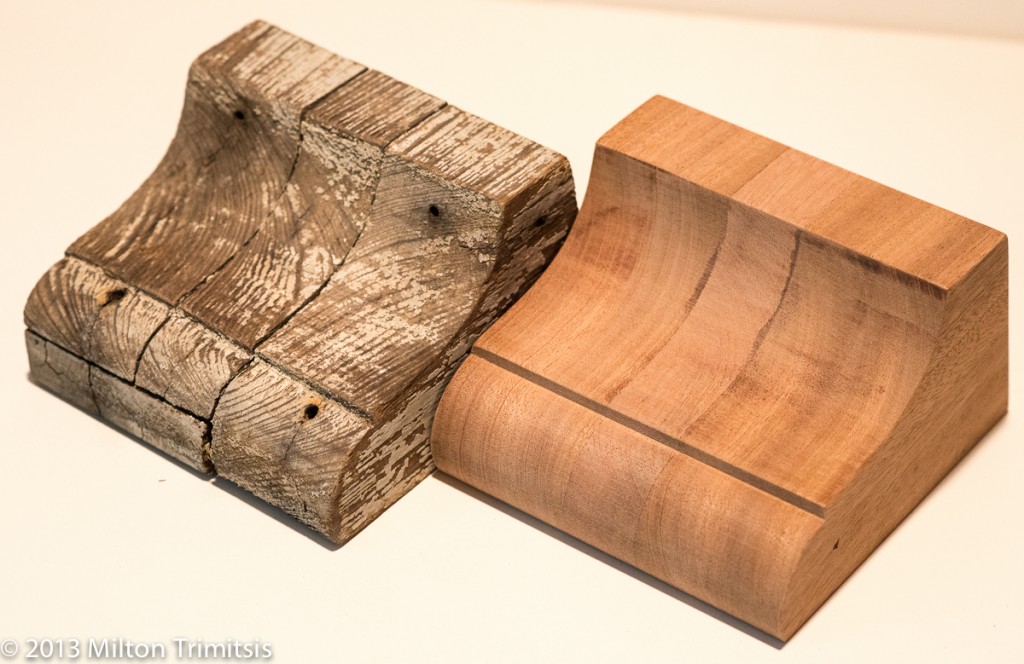
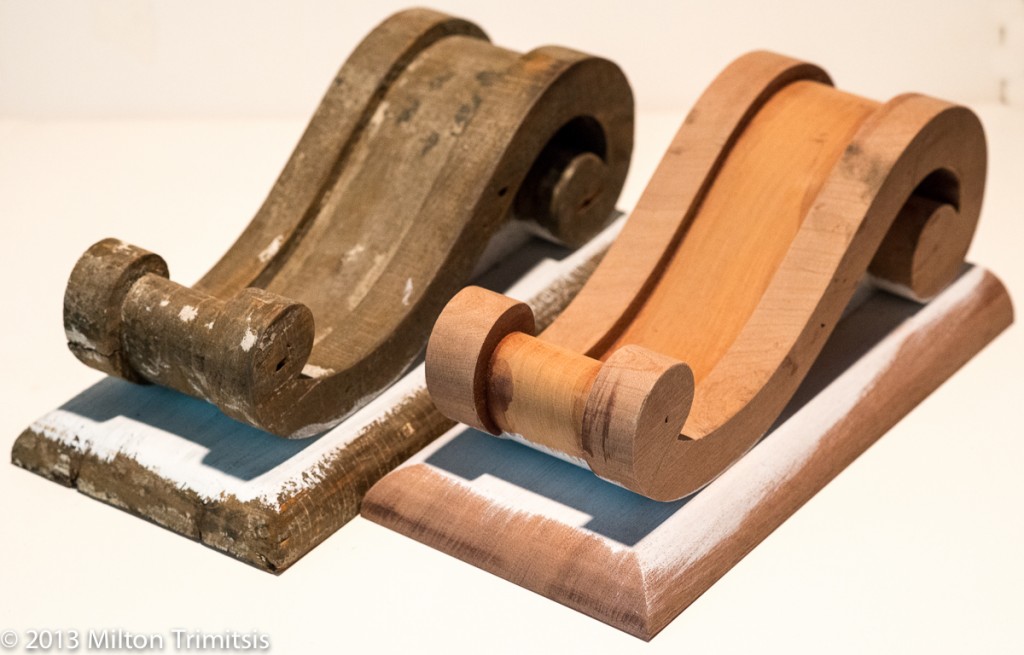
We thrive on this work: quirky details, impossible to find at Home Depot. I even catch myself talking in lofty terms about preserving the “biodiversity” of the architectural ecosystem. But as I was driving to deliver the brackets, my pessimistic angel started whispering in my ear. “How long until 3D printers make small woodshops obsolete for this sort of fabrication?” Subsequently I’ve been taking bets from colleagues about when the pricing curves will intersect. Two years? A decade? I imagine the technology may soon make it more affordable for people to restore their houses, a good thing for sure, but I’ll be sad if the analog skills to make such things disappear.
Addendum
This job came to us from the owner of a favorite hardware store in Jamaica Plain. He handed me a brown paper bag with the two brackets and asked me to price the reproductions. The transaction had a whiff of the illicit, though perhaps only in my overactive imagination.
I didn’t know anything about the house the brackets came from, so, again with the imagination, I made up a story — western suburb, manicured lawn, careful restoration. When I delivered the goods today, I asked my client where they were going. Turns out I’ve been staring at the house for weeks, as it’s directly across the street from one of our big ongoing projects.
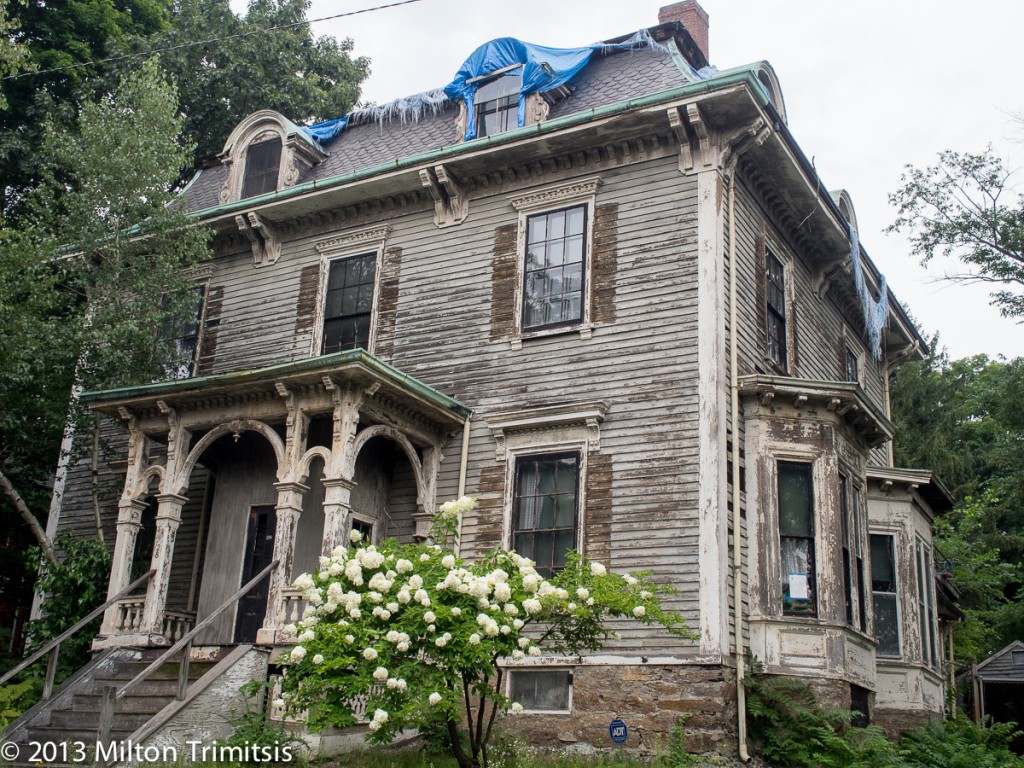
It was very gratifying to see the brackets in situ, though I was a bit embarrassed at not having noticed the resemblance.
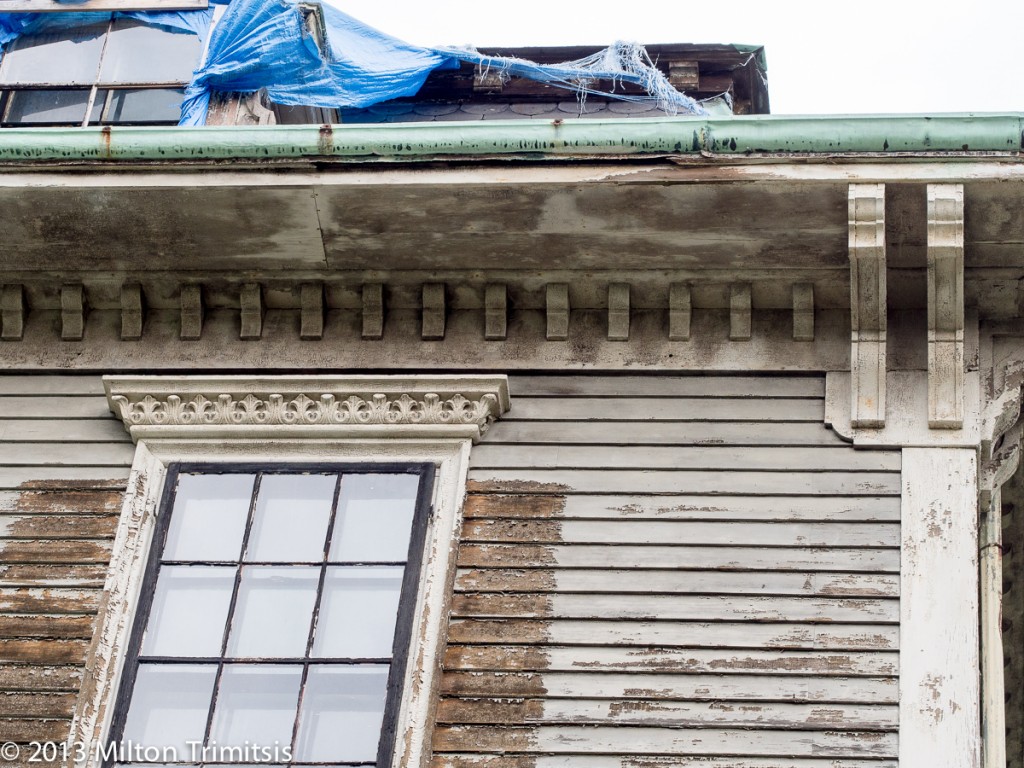
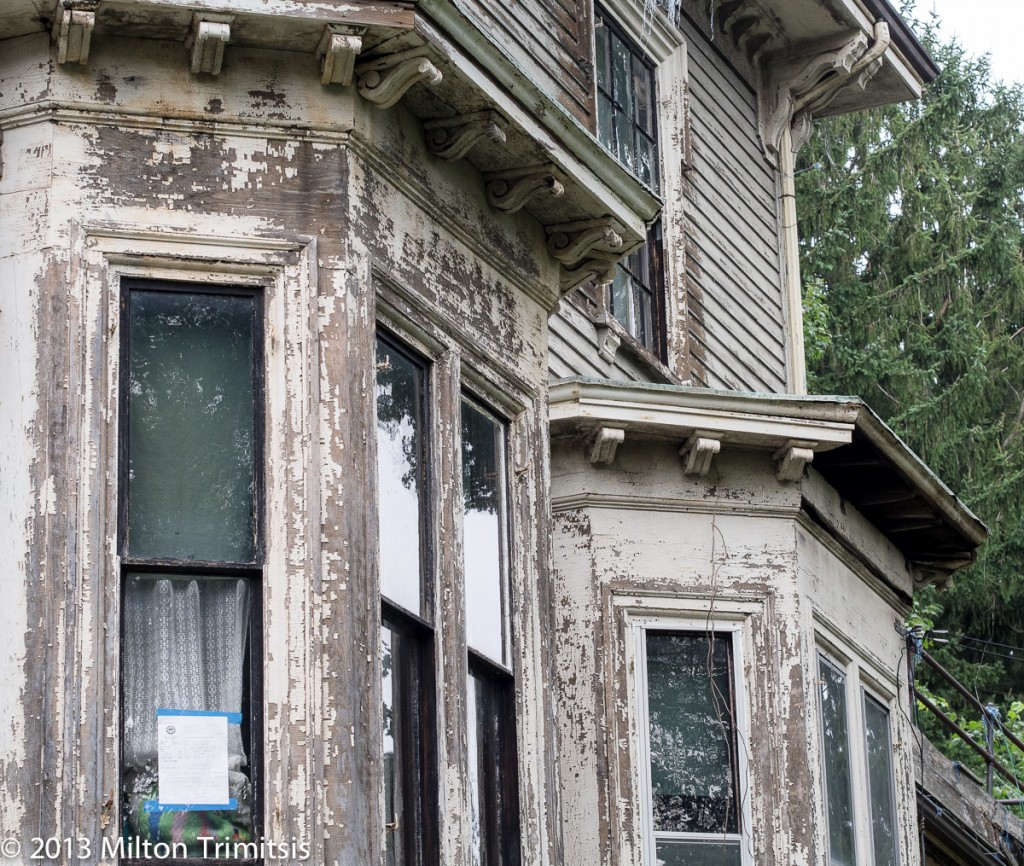
The house has been a regular source of speculation and fantasy as we’ve worked across the street. There’s a syndrome common to historically-minded carpenters and those who volunteer at animal shelters, and I was relieved to know that this house wouldn’t need adoption — someone was starting to make it whole again.
